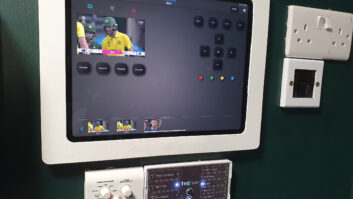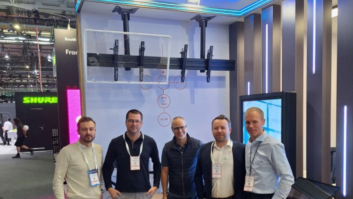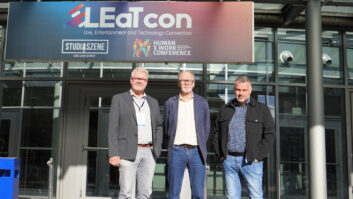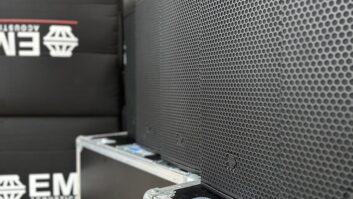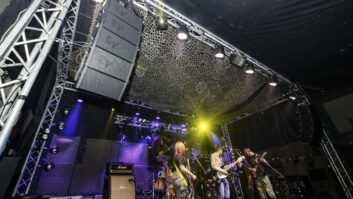To say that the world’s car industry is in a state of flux would be something of an understatement. With the possible exception of banking, no sector of the global economy has come to symbolise the downturn more vividly than motor manufacturing. Scarcely a day goes by without one company or another announcing that it is changing its shift patterns, laying off agency staff, or planning redundancies in order to cope with the rapid drop in demand for new vehicles.
In tomorrow’s world, the carmakers that survive and thrive will be those that can respond quickly to consumer demand, that are close to their customers, and that offer those customers a range of clearly defined brands that are capable of inspiring excitement and enthusiasm, as well as loyalty. In this context, the Volkswagen Group’s investment in its Autostadt visitor attraction, now approaching its 10th birthday, starts to make more sense than ever.
No other global carmaker covers as many market niches, with as many different brands, as VW. In contrast to the likes of GM and Ford, VW has broadened its reach by steadily acquiring brands and developing each one into a major player in its market. From Skoda to Bentley, from SEAT to Bugatti and Lamborghini, every badge in the VW family has an established identity and a concrete mission in life.
Autostadt helps to reaffirm these individual brand identities, while at the same time underlining the resilience and industrial muscle of the VW Group as a whole. The former goal is achieved by a series of ‘brand pavilions’, each one created with its core values in mind; the latter by the provision of a number of ‘Group’ areas, by the presence of the huge AutoTürme (car towers) from which new-car buyers can take delivery of their dream, and by Autostadt’s very location within the VW plant at Wolfsburg – the largest automotive factory in the world.
Reflecting the nature of the carmaker’s products, the attractions at Autostadt are far from static. Just ask Michael Creydt, the AV consultant whose work can be seen throughout the complex and whose involvement with it dates back to 1999, when “the whole site was still a sea of mud”. Since then, Creydt has been called in whenever Autostadt managers have sought new multimedia solutions for their pavilions.
“Autostadt runs eight hours a day, 365 days a year – with longer hours of opening required by the restaurants and during special events,” says Creydt. “Because of this, low failure rate and high levels of reliability are key criteria when selecting AV equipment. Any ‘downtime’ of a show is reported daily to management. Autostadt also wanted to ensure that their own maintenance crews required knowledge of a small number of devices, so it was decided to standardise on products from a select group of manufacturers.”
Among these manufacturers – all of which have pledged high levels of support to Autostadt before, during and after installation – are Tannoy (loudspeaker systems), Crown (amplification), BSS (signal processing), Barco (LED walls and projectors), NEC (flat screens), Alcorn McBride (show control) and Crestron (media control). “We make extensive use of Crestron’s online monitoring capability, together with Crown’s PIP-Lite amp control, so that status reports, failure notifications, and runtime data are available directly from all connected products to remote locations, including mine,” he says. “The system also makes it possible for us to switch the mode of a show from day to night and back again, thereby saving energy and extending useful product life.”
Early signs
Some of Creydt’s most recent work at Autostadt is visible even before entering the complex. A huge, 16m wide by 9m high exterior LED wall, made up of Barco OLite 612 panels, has been fitted to the side wall of the complex’s entrance hall, from which its stunning colours are clearly visible from the Wolfsburg football stadium, half a kilometre across the street. Behind the wall are three Tannoy VQ100 loudspeakers configured as a left-centre-right (L-C-R) system for when the videowall’s content requires audio support. Newly introduced as an effective alternative to line array where very high output and pattern control are concerned, Tannoy’s VQ Series was a fortunate solution for Creydt.
“Our original plan was to use line arrays here, but the available space was just a little too narrow,” explains Creydt. “By building the VQ100s into the videowall support structure we get a 100° beamwidth from each for excellent coverage in front of the screen, and the system has been pre-wired so that, if we have live events in the outdoor concourse, we can add delays and subwoofers to the system for even greater coverage and more bass extension.”
The imperative to give Autostadt’s various zones an inherent flexibility of usage is also evident in the new Nutzfahrzeuge (light commercial vehicle) pavilion, which again sees Tannoy loudspeakers working in tandem with Barco LED panels to create the centre of multimedia attention. Gone are the days, it seems, when visitor attractions such as this relied solely on automated shows to keep their public occupied. These days, it’s all about being able to transform an already special room into something completely unexpected.
The Nutzfahrzeuge LED wall is made up of a combination of Barco NX4 and MiTrix panels, offering the kind of dynamic contrast between high-res video imaging and low-res lighting effects first pioneered – appropriately enough – by car manufacturers at motor shows. In contrast to the exterior OLite wall, audio is almost ever-present here, and Creydt has again opted for Tannoy VQ100s in L-C-R configuration – with the speakers being mounted above the videowall on this occasion.
“We thought about putting the speakers behind the NX4 panels but really wanted to keep that part of the wall translucent,” says Creydt. “So we opted to install them above the NX4s on custom steelwork that sits behind the MiTrix panels, and added a pair of Tannoy V8 loudspeakers underneath the NX4s to give us the vertical dispersion we needed.”
Six further V8s are ceiling-mounted as surround effects speakers and as a second delay line, with a quartet of Tannoy V12s being deployed as a first delay line. The trucks may be light, but the room is big, and the AV content unpredictable. “The standard audio tracks for the movies shown on the videowall are in 5.0-channel format,” Creydt reveals. “We have the infrastructure to add subs if we need to, but the VQ100s go down so low that we may never need them. At the same time, the Autostadt management want to be able to use this room for one-off presentations, so we have a BSS Soundweb London setup to give us different room audio configurations.”
In addition to this, the Nutzfahrzeuge space has its own dedicated boardroom with a 14-seat table, drop-down projection screen and Crestron wireless touchpanel for multimedia control. It is here that we get our first taste of Creydt’s use of Tannoy’s acclaimed ‘eyeball’ loudspeaker, the CMS401e – a 4in ceiling speaker that can be angled towards the listener within its fixed mounting ring.
A second – more unusual – application of the Tannoy eyeball appears in the VW Group World, an area of Autostadt’s entrance forum that has recently been given a makeover to better reflect modern concerns such as sustainability, industrial design and (shock, horror) financial responsibility. Visitors interested in this last subject approach a series of five LCD flat panels mounted in portrait mode within a custom ABS enclosure. Touching a screen results in a short interview with a particular member of VW’s immediate financial community being broadcast on that screen, with audio being played back through a dedicated Tannoy ‘eyeball’.
As elsewhere at Autostadt, Creydt used EASE plotting to predict sound coverage and dispersion – a particularly critical factor here, where the screens are within centimetres of one another and unwanted ‘spill’ between channels had to be kept to a minimum. To embed the CMS401e speakers within the screen enclosures, their ceiling rings were removed and they were installed behind custom-fabricated front grilles. “It was a really ‘quick and dirty’ solution, but it works!”
Other areas of Autostadt that have recently required Creydt’s attention are the new Freiraum (literally ‘free room’) events area, which is intended to house temporary art installations as well as educational and business discussions, and the Stadt Café, a Viennese-inspired eatery that is part of the customer new-car collection area. Here the sound system has been transformed by the use of Tannoy Arenas – speakers initially designed as home-theatre centre-channel enclosures that are attracting quite a following among commercial installers.
Creydt remains tight-lipped about which Autostadt zones will benefit from new designs next, but it’s clear that, for all the ever-changing demands of brand managers, content creators, architects and interior designers, working for a project such as this can be hugely enjoyable. With the help of supportive manufacturers, distributors and contractors, it’s good for business, too.
